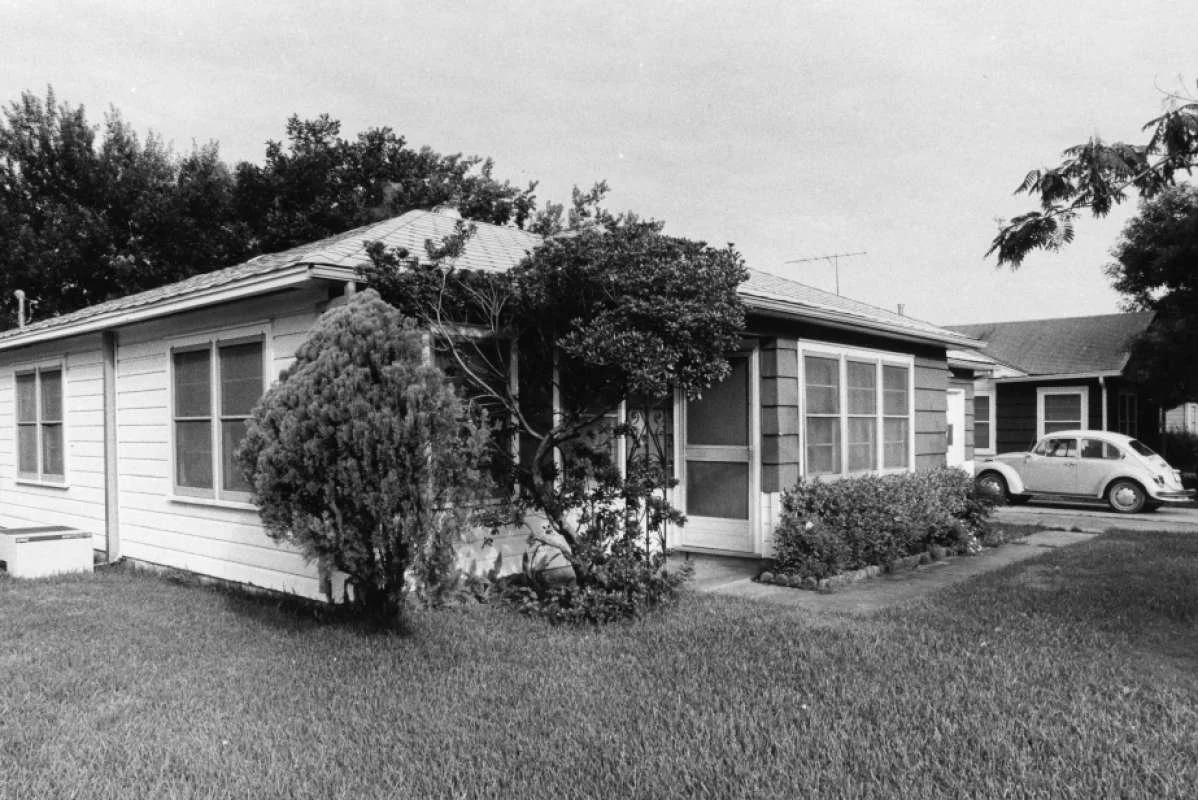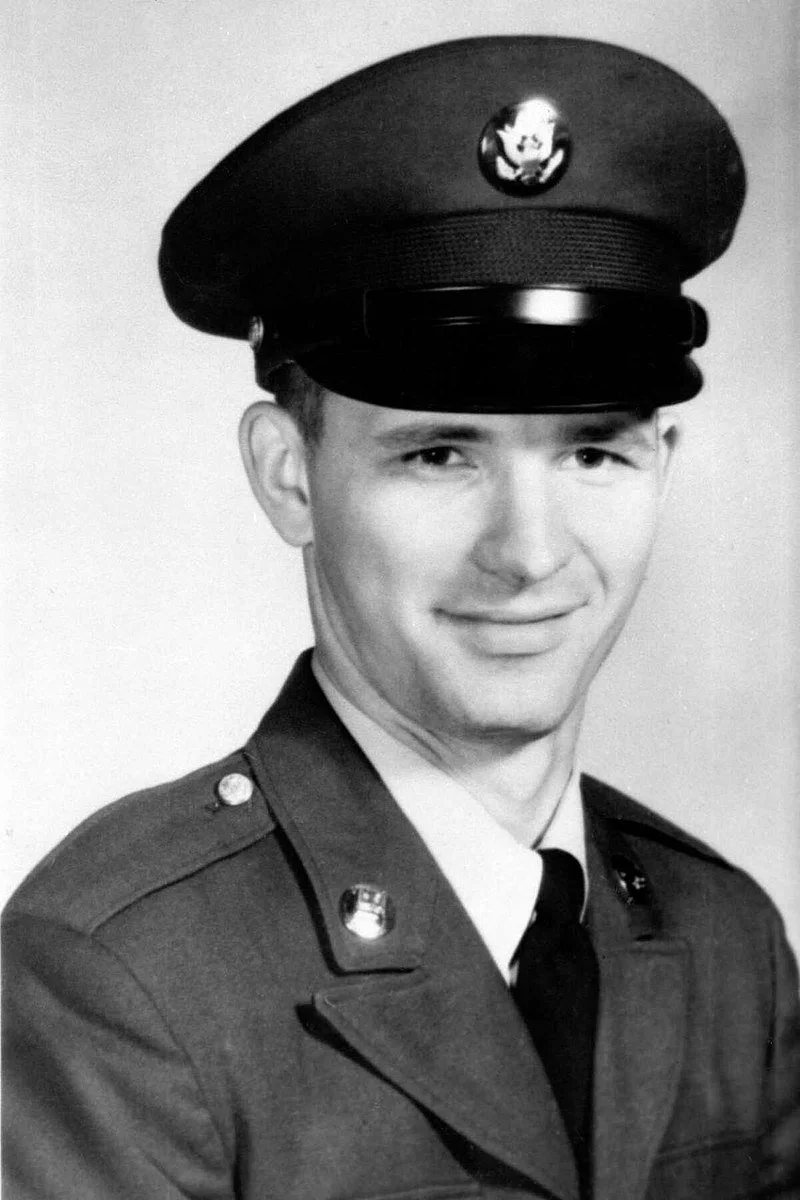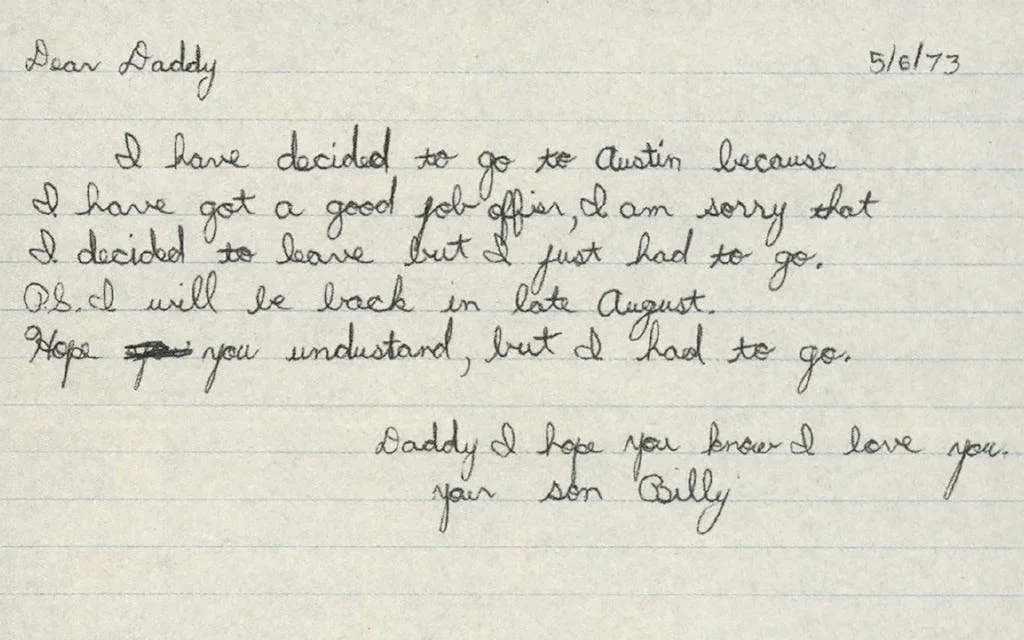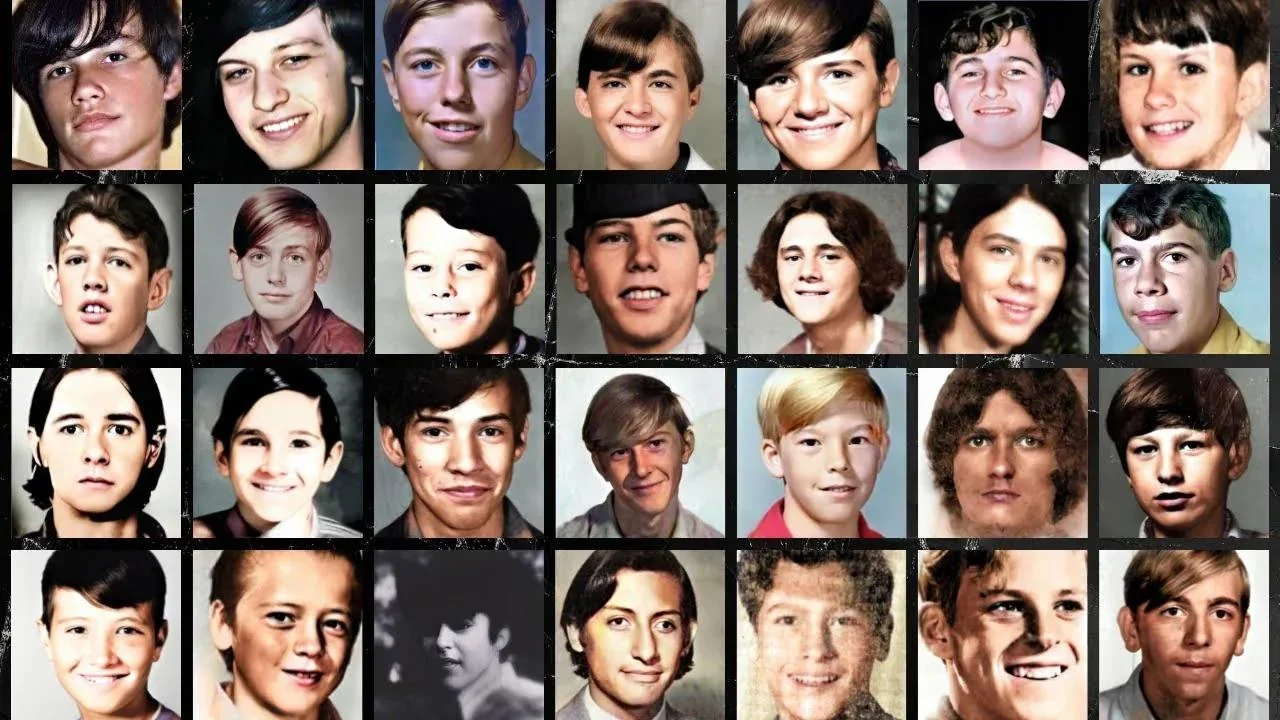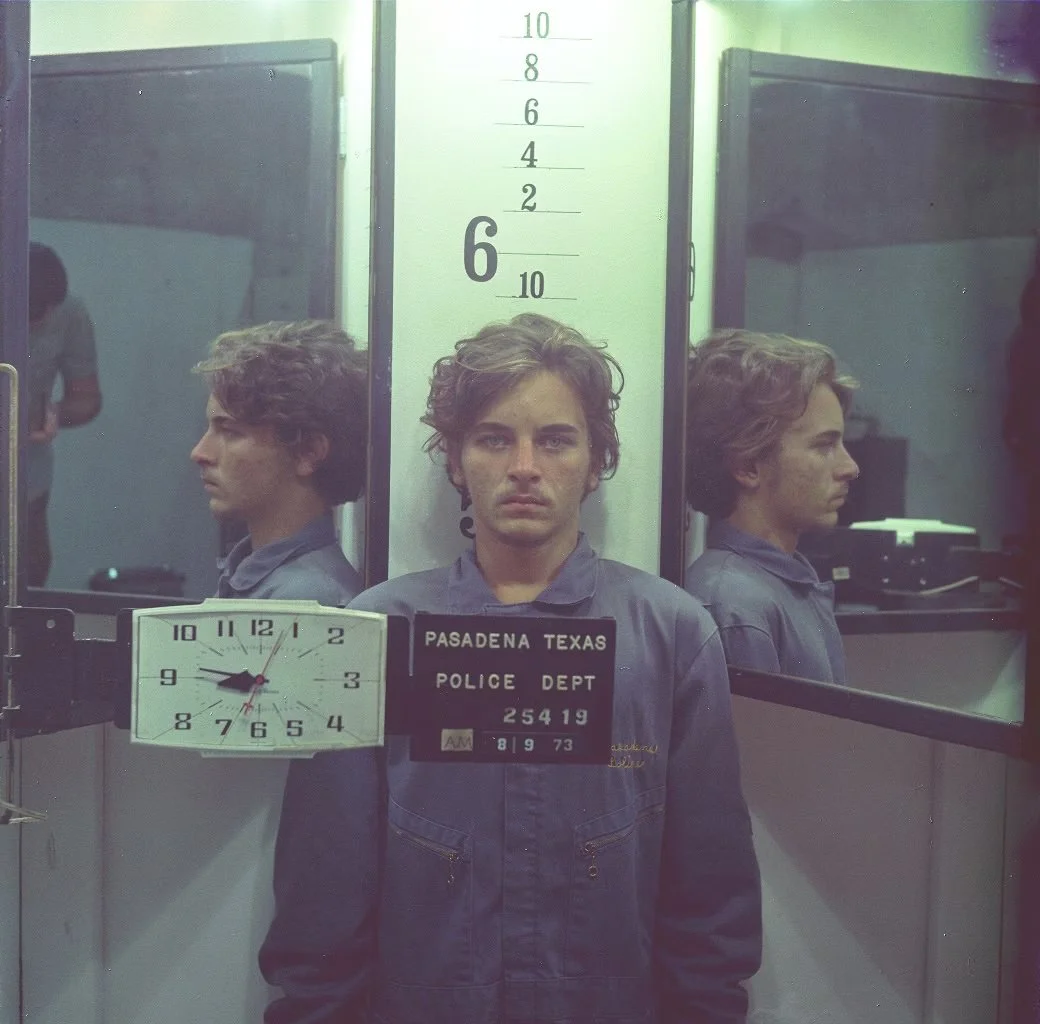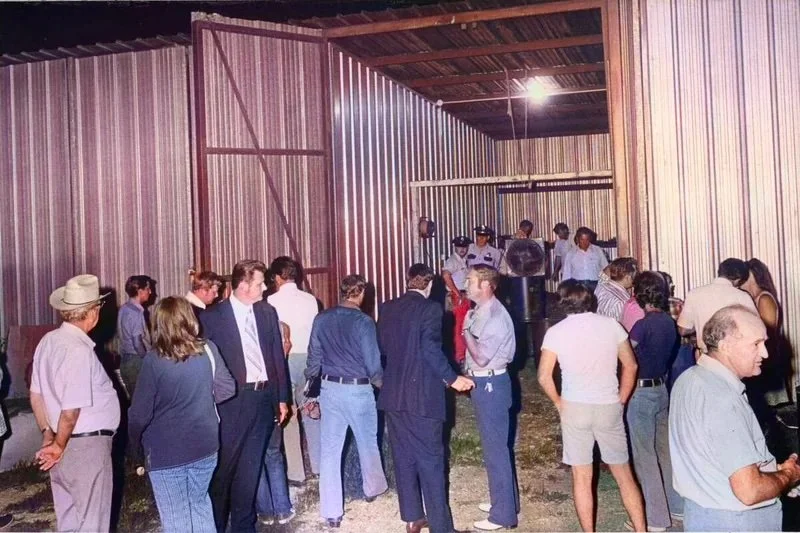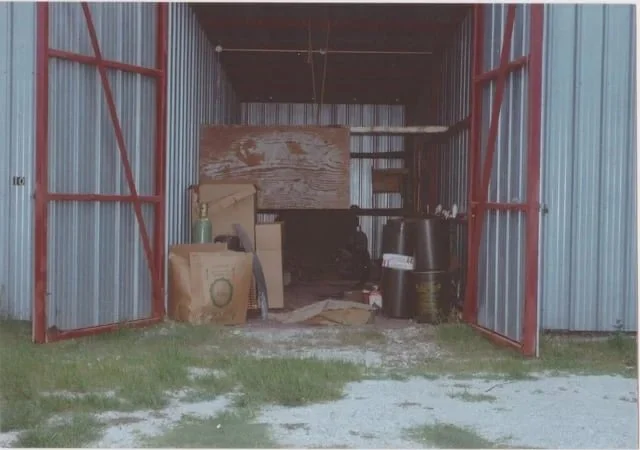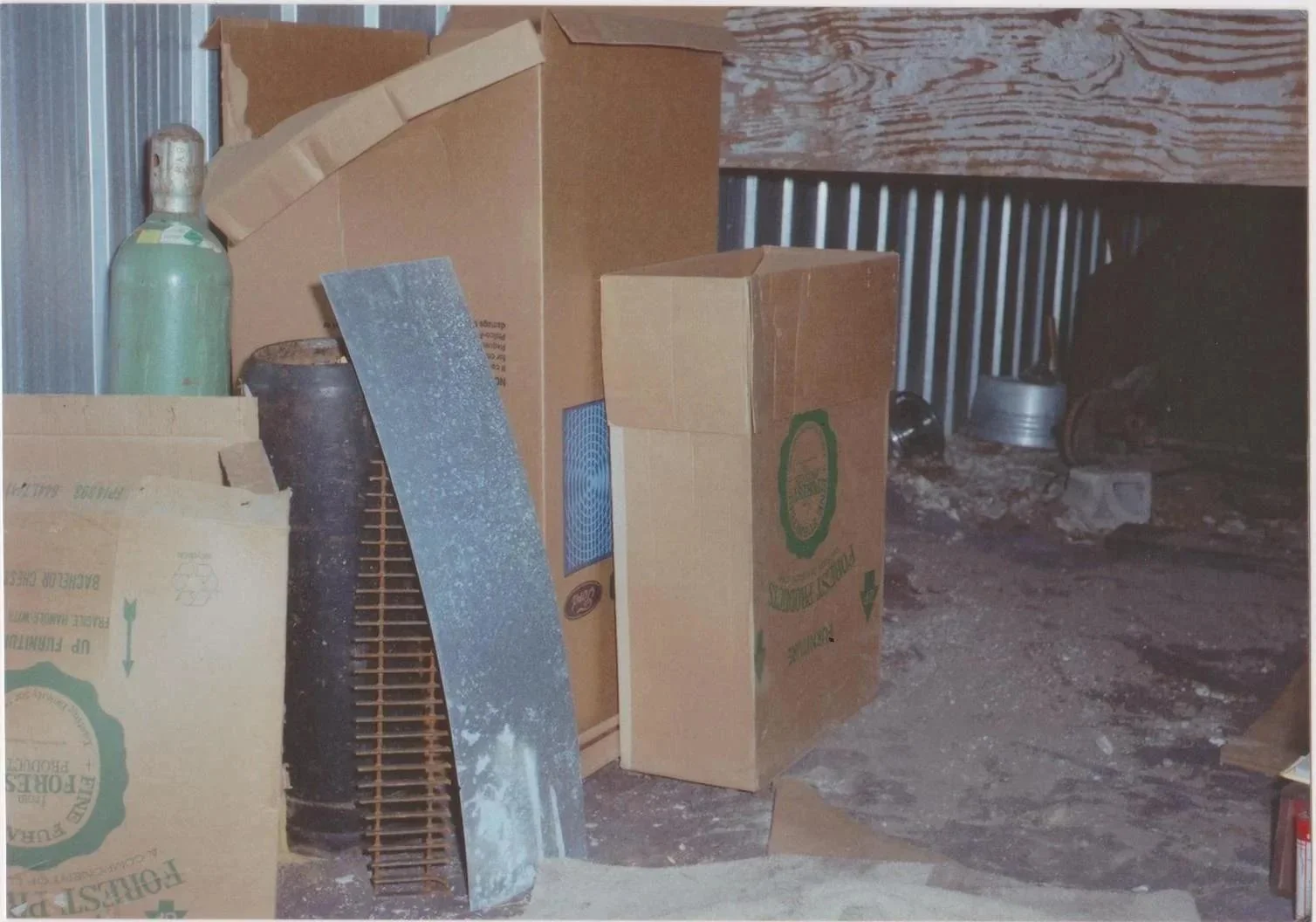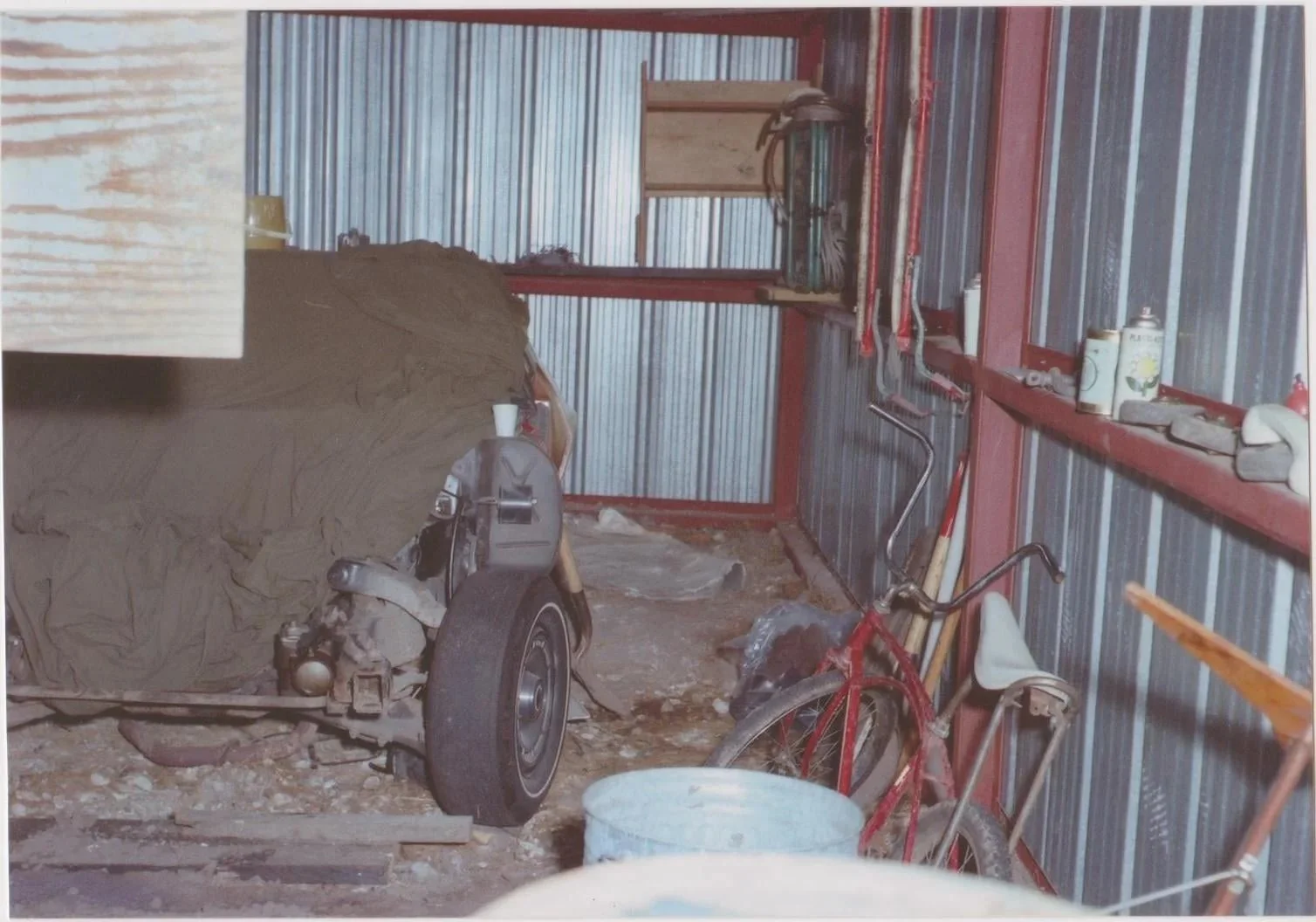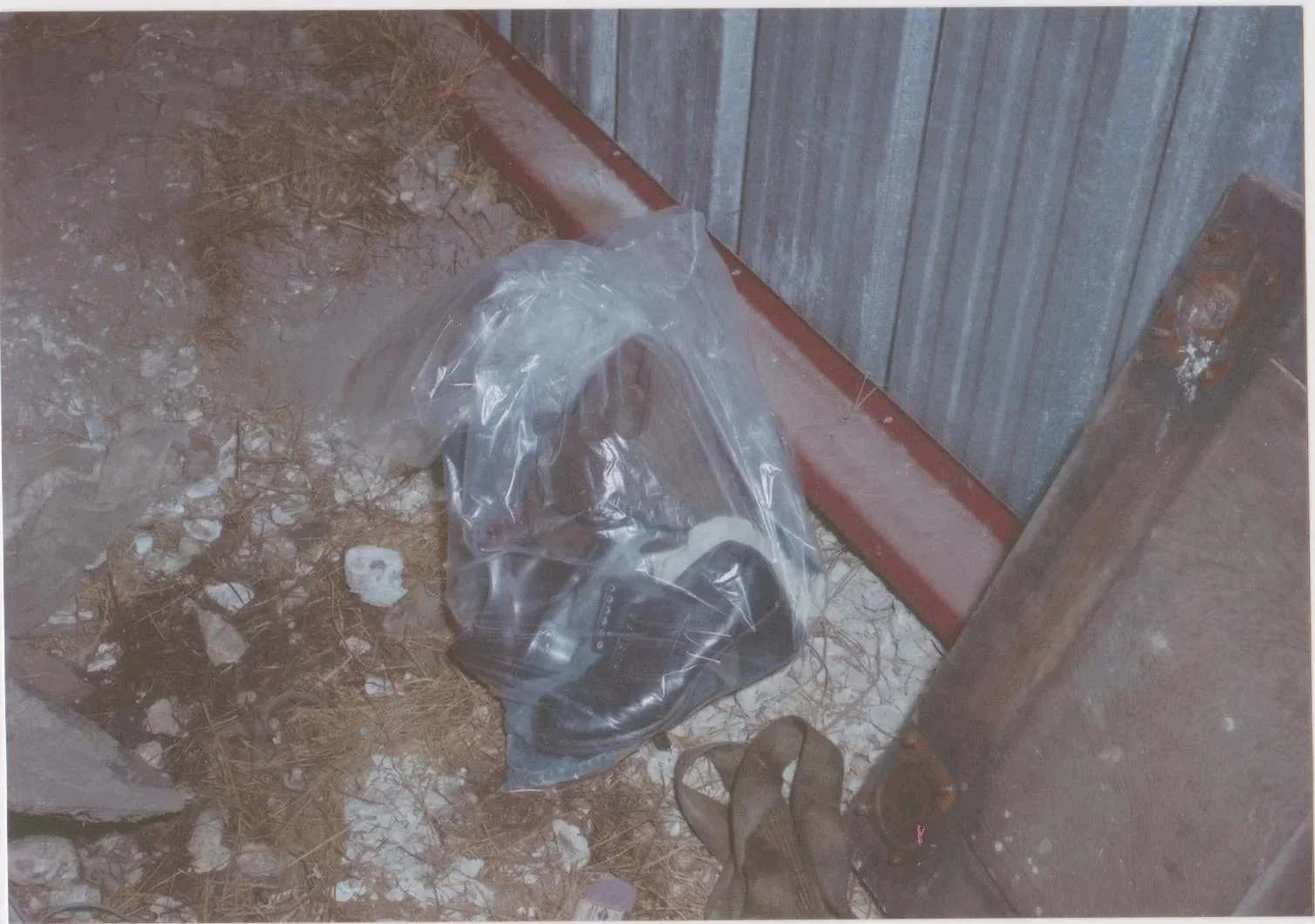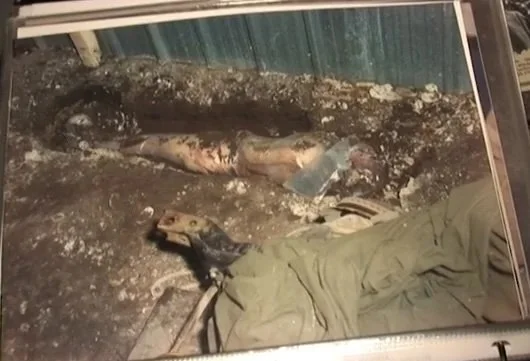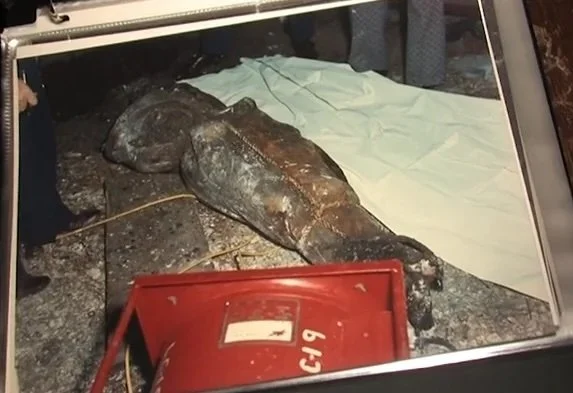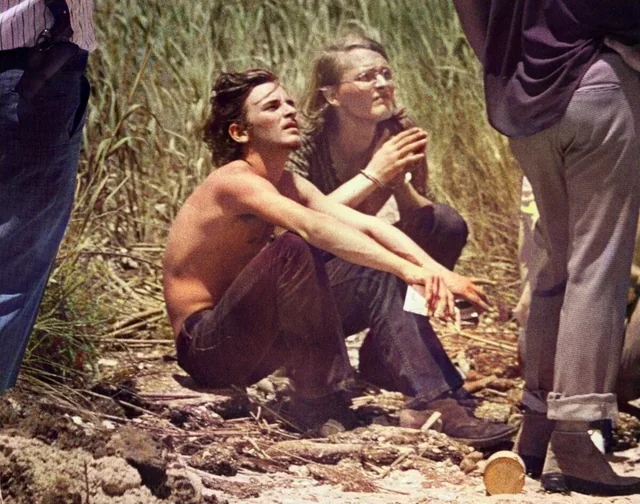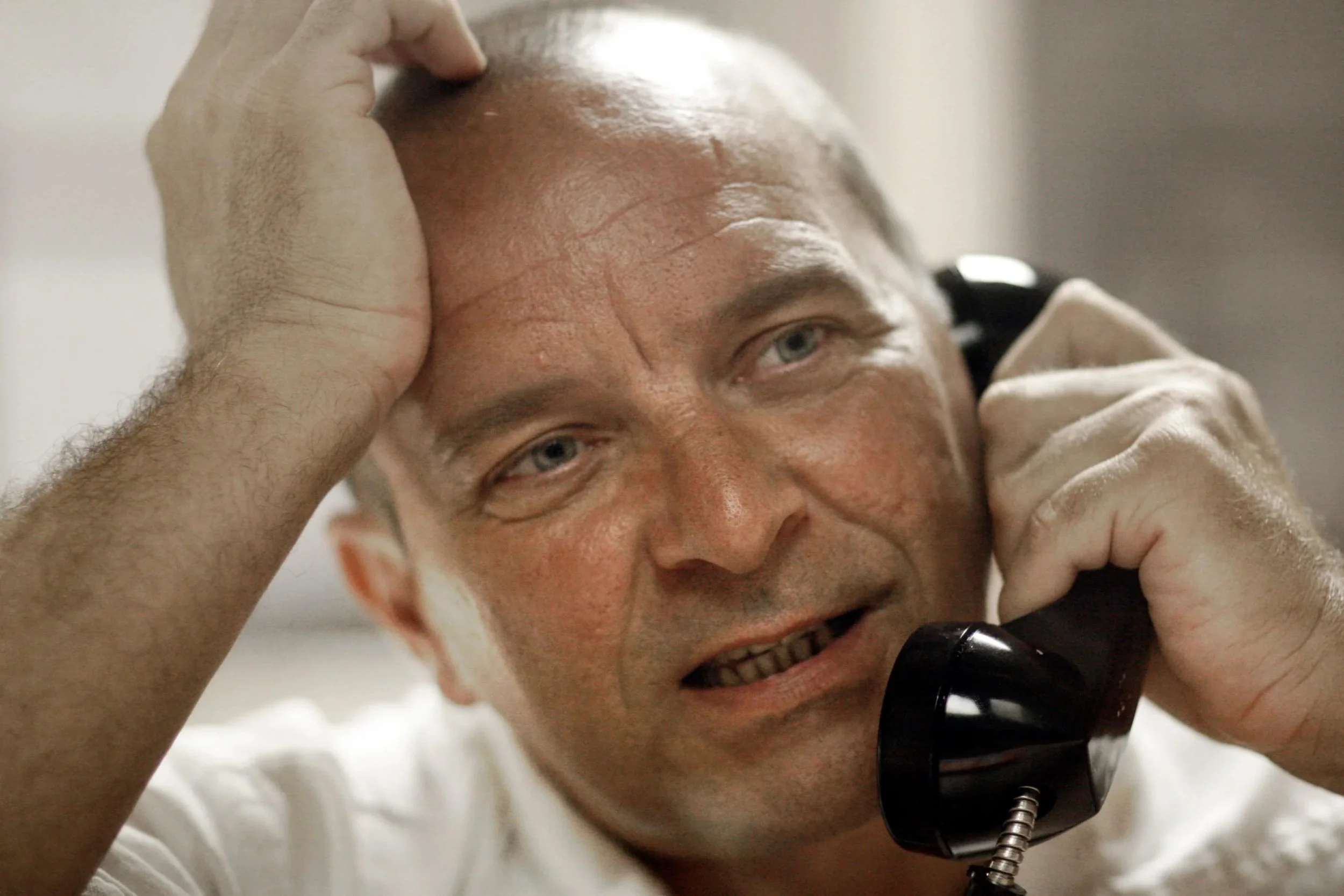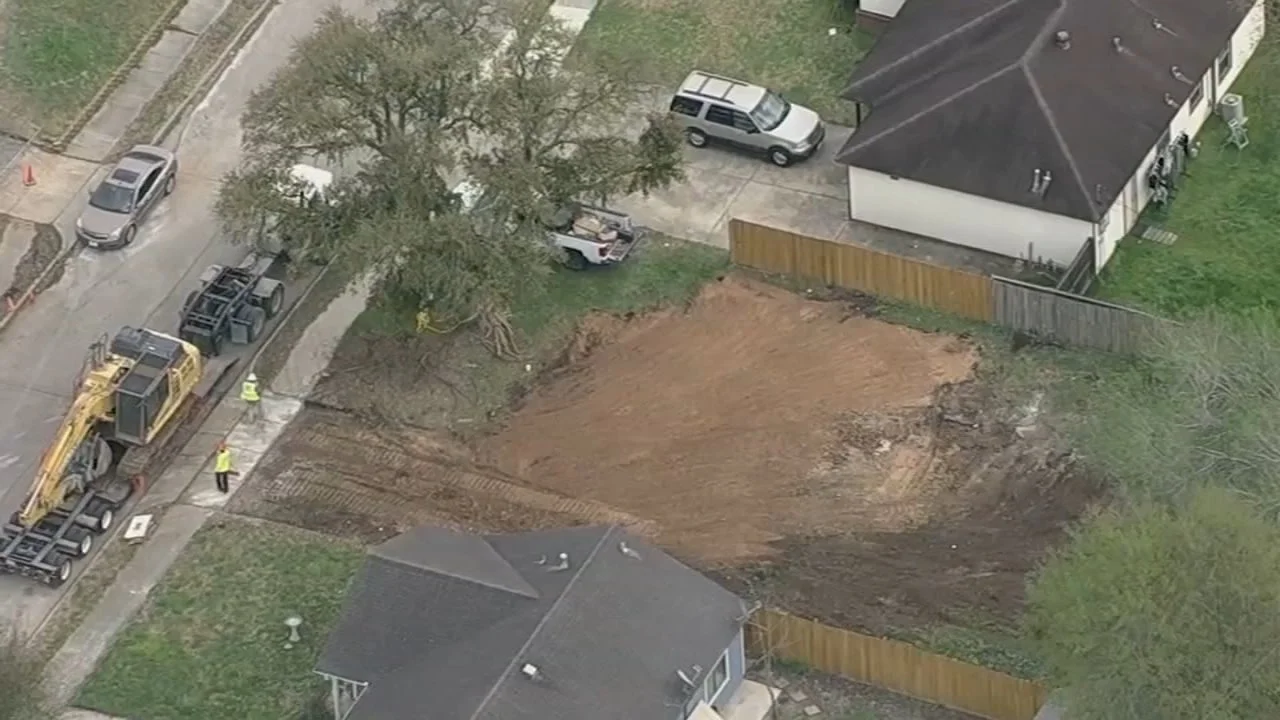Dean Corll
24 min read
The release of the new docuseries, John Wayne Gacy: The Devil in Disguise, got me thinking about another killer — one who came before Gacy, but never got the same attention. Because before Chicago had its clown, Houston had the Candy Man. And to this day, some of his victims still don’t have names.
Introduction
On August 8, 1973, the Pasadena Police Department received a phone call from a teenage boy, "Y'all better come right now. I killed a man." When Officer J. B. Jamison arrived at 2020 Lamar Drive at 8:26 a.m., he saw two young men and a half-dressed young woman sitting on the sidewalk with a .22 caliber pistol lying between them. The younger of the two boys was crying and informed the officer that the man he had killed was inside the house. The officer picked up the gun with a pencil and placed it in an evidence bag before putting all three teens in the back of the patrol car. When reading their Miranda rights, the young teen blurted out he didn't care who knew about it and needed to get it off his chest; he knew where there may be more bodies buried.
Inside, the fully naked body of a man lay face down in the hallway with what appeared to be five or six bullet holes in the chest and back. The body was on its left side, nose to the baseboard, with the right foot intersecting a loose telephone cord laced between the toes. In the bedroom located directly by the body, thick, clear plastic covered the floor, and men's clothing was scattered about. In the center of the room was an 8x3-foot slab of plywood; at each corner, holes had been drilled, and two sets of handcuffs were linked to the holes with nylon ropes threaded through the others.
The search through the rest of the house revealed rolls of clear plastic-the same type used to cover the floor, nylon rope, eight pairs of handcuffs, several dildos, including an 18-inch double-headed dildo, and thin glass rods, many of them broken off in the floor. A wallet was found with a driver's license issued to Dean Arnold Corll with the dead man's picture on it. A white 1972 Ford Econoline van was sealed off in the driveway with navy blue curtains in the windows. Inside, they found rope, a piece of carpet covered in dirt stains, and an upraised box with a drawer opening to its bottom, topped with dark blue padding. The pegboard walls inside the back of the van were rigged with rings and hooks. In the backyard, another wooden box was found. This one had air holes, and several strands of human hair were found inside.
Corll’s residence at 2020 Lamar Drive
Source: Houston Chronicle
Early Life
Dean Arnold Corll was born on December 24, 1939, to Arnold and Mary Corll in Fort Wayne, Indiana. Corll's father was strict with his children, whereas his mother was markedly protective of her sons. Corll's parents divorced shortly after his brother Stanley was born due to their clashing personalities. In 1950, Arnold and Mary remarried and moved to Pasadena, Texas, only to divorce again in 1953. By the time Corll was a teenager, his mother had married a traveling clock salesman, Jake West, and they moved to Vidor, where Corll's half-sister, Joyce, was born. Corll enrolled at Vidor High School as a freshman and was an average, quiet student who played the trombone in the school band.
One day, a pecan salesman stopped by the Wests' home and noticed Mary baking several pies; he advised Mary to start making candy if she had that much energy. She loved the idea so much that she drove to a candy plant in Houston and paid $50 for a praline recipe. The family soon began operating their newfound business in their garage. Corll assisted with wrapping, boxing, and delivering the candy. After graduating in 1958, the family moved to the outskirts of Houston and opened their new store, Pecan Prince, specializing in pralines, pecan chewies, and divinity.
In 1962, Corll was drafted, and Mary waged a two-year delaying action, declaring that he was indispensable to their business. Mary divorced Jake in 1963 and opened a new candy shop, Corll Candy Company. That same year, a male employee told Mary her son was making sexual advances toward him, and she fired him in response. On August 10, 1964, Corll was drafted into the army and had a respectable record in the radio repair school at Fort Hood. Ten months later, he applied for a hardship discharge on the grounds that his mother needed him back home. He was honorably discharged on June 11, 1965. That year, the Corll Candy Company moved across the street from Helms Elementary School.
Dean Corll
Source: Houston Chronicle
The Candy Man
According to locals, Corll frequently gave away free candy to children, particularly boys. He bought a pool table and installed it in the back of the candy store, inviting the teenage boys to come hang out after school. Corll would also take the boys for rides in his van, usually visiting the beach. After a while, people began to notice that Corll seemed unusually flirtatious around young men and boys. A few people told Mary they suspected her son might be homosexual. Still, she refused to believe it, telling a reporter for the Houston Post that her son was "loyal, obedient, helpful, loving, and a good, normal boy."
In 1967, Corll was often seen with a twelve-year-old boy, David Owen Brooks, a sixth grader from a broken family who hung around the candy shop after hours with the other boys in town. He later stated that Corll was the first person not to criticize him for his glasses. Eventually, Corll began offering Brooks gifts and money in exchange for oral sex.
Former employers of the candy company recall Corll doing a lot of digging in the years leading up to 1968. He dug into a room referred to as his "pouting room," boarded, and cemented it. This was apparently where he went when he was angry, and his ears "turned red." He dug between the rear of the factory and the railroad and near White Oak Bayou (which soon became a blacktop parking lot). Corll's exertions were carried out in the middle of the night under the guise of burying spoiled and contaminated candy to protect it from pests.
In 1968, Mary met a man and divorced him again. He had become very abusive, and she had begun to hide in the candy factory for 6 weeks. According to Mary, his former wife had 'hung herself' in the garage, and he took the rope off her neck before calling the police. Corll helped her pack up her car with her belongings as she sold the candy company and fled to Colorado to get as far away from him as possible.
For the first time in his life, Corll was alone, and he started a job as an electrician at Houston Lighting and Power Company. In 1970, Brooks dropped out of school at fifteen and began to view Corll as a father figure. He often stayed with Corll, who moved between rental properties at a breakneck pace. Former employees later recall that Corll was retaining large amounts of plastic and nylon cords that would have otherwise been discarded. The same brands of plastic and nylon were later found to be used on his victims. Forty-two boys had vanished from Houston Heights between 1970 and Corll's death in 1973.
Murders
Corll's first known victim was Jeffrey Alan Konen (18), a University of Texas student who was abducted while hitchhiking on September 25, 1970. His nude body was discovered buried under a large boulder covered in a layer of lime and wrapped in plastic. Konen's autopsy revealed he had died of manual strangulation, although the cloth gag in his mouth and the nylon cord found bound around his hands and feet suggested he had been tortured before his death.
On December 13, David Brooks arrived unannounced at Corll's apartment at Yorktown Street. In a police statement Brooks later gave, two naked boys were tied to a bed while Corll was molesting them. Corll offered to buy Brooks a car in exchange for his silence. A few days later, Corll admitted he had murdered the boys and offered Brooks $200 ($1,620 2025 inflation) for every boy he could lure to him. Based on the timeline, the boys were likely James Eugene Glass and Danny Yates, 14-year-old best friends who had gone missing after a church service. They had been raped, tortured, and strangled. An electrical cord with alligator clips attached to each end was found buried next to Yates's body.
On January 30, 1971, Corll and Brooks saw two brothers, Donald Wayne Waldrop (15) and Jerry Lynn Waldrop (13), on their way to the bowling alley. When the boys' father went to the police to file a missing persons report, the police told him the boys were simply runaways. No investigation was done, even though the two brothers had gone missing just half a mile from the church where Glass and Yates were last seen. In a statement Brooks later gave, the boys had been enticed into Corll's van and driven back to his apartment, where they were raped and tortured. Brooks watched as Corll strangled both boys to death. A few weeks later, David Brooks turned sixteen, and Corll bought him a green 1969 Chevrolet Corvette.
On March 9, Randall Lee Harvey (15) was riding his bike to work at a gas station about three miles from his home in Houston Heights. Brooks knew Harvey well and persuaded him to throw his bike in the back, and he and Corll would drive him the rest of the way. Instead, he was taken to Corll's apartment on Magnum Road, where he was raped, tortured, and shot in the head by Brooks.
On May 29, Gregory Malley Winkle (16) and David William Hilligiest (13) went missing on their way to the Heights neighborhood swimming pool. Winkle was a former employee at the Corll Candy Company, and Hilligiest was often seen hanging out at the candy shop and playing pool. The police again labeled the boys as runaways. David Hilligiest's parents hired a private investigator and performed their own investigation when the police again did nothing. They learned that Winkle had a friend who drove a Plymouth GTX with the license plate TMF724. Had the police followed this lead, they would have found that the vehicle was registered to Dean Corll. The boys were raped and strangled at an apartment Corll rented on West 11th Street.
On August 17, Ruben Willfard Watson Haney (17) was walking home from the movie theater when Brooks and Corll saw him. Haney, a friend of Brooks, agreed to join him at Corll's new apartment on San Felipe Street for a party. He was subsequently raped, tortured, and strangled to death.
In Sept 1971, an unidentified victim was abducted from the corner of 11th and Rutland in the Heights. According to a police statement from Brooks, the boy was taken back to Corll's house, which he rented on Columbia Street, and kept alive for four days. Corll was visibly upset over having to kill this boy because he really liked him.
That winter, Brooks introduced another one of his friends to Corll's, Elmer Wayne Henley. Henley, like Brooks, came from a broken and financially unstable family. He dropped out of school after his parents' divorce and was arrested for assault with a deadly weapon and burglary. Henley was likely an intended victim, but Corll seemed to think the fifteen-year-old would make a suitable accomplice. Over the next few weeks, Corll repeatedly told Henley that he was part of a human trafficking and porn circle operating out of Dallas, in which the teenagers were sold off as houseboys across the country. Corll offered Henley $200 for any boy he could bring to his apartment.
In mid-February of 1972, an unidentified victim was picked up from the corner of 11th and Studewood in the Heights with the promise of smoking weed at Corll's. Then Henley used a ruse that he had practiced with Corll in which he would cuff his hand behind his back, use a key hidden in his pocket to free himself, and then trick the victim into putting the handcuff on himself. Once the victim was distracted, Henley watched as Corll bound him with a nylon cord and placed tape over his mouth. Henley left, assuming the boy was going to be sold into sex trafficking.
This same scheme was used by John Wayne Gacy, who killed 33 young boys between 1972 and 1978 in Chicago. Gacy later stated the national headlines on the Houston Mass Murders had inspired him. He studied how Corll lured boys and used handcuffs as part of a “trust game.” Gacy later admitted he picked up that exact trick from Corll. The Candy Man’s crimes didn’t just end in Houston — they inspired another monster hundreds of miles away.
On March 24, 1972, Corll, Brooks, and Henley saw Frank Anthony Aguirre (18) leaving the Long John Silver where he worked. Henley was a friend of Aguirre's and was invited back to Corll's to drink and smoke weed. They played the handcuff game before Corll went in for his attack. In a 2010 interview, Henley claimed he tried to stop him. Still, Corll refused and said he had raped and tortured the previous boy Henley brought over, and he intended to do the same with Aguirre.
On April 20, Mark Steven Scott (17) was explicitly chosen by Corll to be his next victim because he had recently "cheated Corll out of a deal" related to stolen property. Scott was forcibly grabbed and attempted to stab Corll with his pocket knife before he was restrained. Scott suffered hours of torture and rape before ultimately being strangled with a cord.
On May 21, Billy Gene Baulch Jr. (17), a former employee at the candy company, and Johnny Ray Delome (16) were abducted on their way to buy sodas. In Brooks's police statement, both boys were tied to Corll's bed. After their torture and rape, Corll forced Baulch to write a letter to his parents that he and Delome had found jobs for a trucker loading and unloading from Houston to Washington. Henley strangled Baulch before shouting, "Hey, Johnny!" and shot Delome in the forehead; however, the bullet exited through his ear, and he continued to plead, "Wayne, please don't!" before he was strangled.
William Ridinger (19) was lured to Corll's a few weeks later. He was the only known victim to escape. After being tied up and tortured for 3 days, Brooks, in a moment of compassion, allowed Ridinger to leave with the promise that he would never tell anyone. Shortly after Henley knocked Brooks unconscious while Corll tied him to the bed and assaulted him repeatedly, despite this, Brooks continued to be an accomplice.
On July 19, Steven Kent Sickman (17) was last seen leaving a party near the Heights shortly before midnight. He was savagely bludgeoned in the chest before being strangled to death.
On August 21, Roy Eugene Bunton (19) was abducted while walking home from work. He was gagged with a Turkish towel, and his mouth was bound with tape before being shot in the head twice.
On October 3, Wally Jay Simoneaux (14) and Richard Edward Hembree (13) were enticed into Brooks Corvette. Simoneaux was known to have called home and shouted "momma" into the receiver before being disconnected. Hembree was accidentally shot in the mouth by Henley. Hours later, the two were strangled to death.
On November 1, Willard Karmon Branch Jr. (18) disappeared while hitchhiking. His body was found gagged and emasculated. Corll severed his genitals with a knife and placed them in a plastic bag, which he buried next to his body.
On November 11, Richard Alan Kepner (19) was abducted on his way to a phone booth and strangled to death.
In February of 1973, Joseph Allen Lyles (17) went missing. He was a friend of Henley and Brooks. He was known to have visited Corll's apartment to buy marijuana before his disappearance.
In March of that year, Corll moved into 2020 Lamar Drive, his father's old home. There were no known victims between March 1 and June 4, 1973. Corll suffered from a hydrocele in early 1973, which may account for the period of inactivity. After recovering, Henley later compared Corll's escalation to being "like a blood lust," adding that he and Brooks would instinctively know when Corll was to announce that he "needed to do a new boy," because he would appear restless, smoking cigarettes, which he rarely did, and making reflex movements.
On June 4, William Ray Lawrence (15) was picked up by Corll. They made him call home and tell his father that he was going fishing with friends and would return later in the week. Lawrence was tortured for 3 days and strangled to death with a cord. Before his death, Corll forced Lawrence to write a letter to his family that he was seeking employment in Austin and would return later that summer.
Letter written by William Lawrence
Source: Texas Monthly
On June 15, Raymond Stanley Blackburn (20), a married man hitchhiking on his way to see his newborn baby, was abducted and strangled to death by Corll.
On July 7, Henley began taking driving lessons at Coaches Driving School in Bellaire, where he met Homer Luis Garcia (15). The following day, Garcia called his mom to say he was staying the night with his friend Henley. He was shot and left to bleed to death in Corll's bathtub.
On July 13, Brooks married his girlfriend, who was pregnant with his child. He was not known to have participated in the subsequent three killings.
On July 19, Michael Anthony Baulch (15), the brother of a previous victim, Billy Baulch, was abducted on his way to get a haircut. He was strangled to death.
On July 25, Marty Ray Jones (18) and Charles Cary Cobble (17) were abducted. Cobble had phoned home in a state of hysteria that he and Jones had been captured by drug dealers. The boys were tortured and raped for two days before Corll forced them to fight each other with the promise that the one who beat the other to death would be allowed to live. After several hours of beating each other, Jones was tied to a torture board and forced to watch as Cobble was raped, tortured, and shot twice in the head. Jones was then raped, tortured, and strangled with a Venetian blind cord.
On August 3, James Stanton Dreymala (13) was abducted while riding his bike and driven to Corll's in the pretense of collecting empty glass bottles to resell. Brooks stated they bought a pizza, and he spent 45 minutes in the company of Corll before being tortured, raped, and strangled.
Victims of the Houston Mass Murders
Forensic developments are still ongoing to determine the identities of Corll's victims. One of the unidentified victims—the sixteenth body found in the boat shed—was in an advanced stage of decomposition at the time of his discovery. This unidentified victim was found wearing red-white-and-blue striped swimming trunks, cowboy boots, a leather bracelet, and a long-sleeved, khaki-colored T-shirt decorated with a peace symbol. An updated facial reconstruction was released to the media in August 2023.
The Girl
On August 7, 1973, Rhonda Williams (15) phoned Henley to say that she was planning on running away from home. She had been in and out of foster care all her life and was currently living in the Heights with her abusive father. That night, after her father passed out in a drunken stupor, Rhonda packed a bag and asked Henley to meet her at 24th and Rutland. Henley arrived with his friend, Timothy Cordell Kerley (20), and the three drove back to Corll's, arriving around 3 a.m.
Corll was angry that Henley had brought a girl into his house, telling him that he had ruined everything. Henley explained to Corll that Williams had been in a terrible argument with her father that evening, and she did not want to return home. Eventually, Corll calmed down, and they smoked weed, huffed paint, and drank beer before passing out about two hours later.
Rhonda Williams
Source: Wikimedia
Henley woke up to Corll handcuffing him with his ankles bound together. Kerley and Williams lay beside him, bound with nylon rope, gagged, and lying face down on the floor. Henley began to protest, and Corll reiterated that he was angry that he had brought a girl into the house. "Man, you blew it bringing that girl," before shouting, "I'm gonna teach you a lesson!" He then repeatedly kicked Williams in the chest before placing a radio between her and Kerley and turning the volume to maximum. Corll then lifted Henley to his feet, dragged him into his kitchen, and threatened to kill him because his bringing Rhonda over interfered with his plans. Henley told Corll he would do whatever he wanted if he would take the handcuffs off him. After thirty minutes of discussion, Corll untied Henley. Then he carried Kerley and Williams into a bedroom and tied them to opposite sides of his torture board. Corll then handed Henley a hunting knife and ordered him to cut away Williams's clothes, insisting that, while he would rape and kill Kerley, Henley would do likewise to Williams. Henley began cutting away Williams's clothes as Corll undressed and began to sexually assault Kerley.
Henley then grabbed Corll's pistol, shouting, "I can't go on any longer! I can't have you kill all my friends!" Corll approached Henley, saying, "Kill me, Wayne!" Henley stepped back a few paces as Corll continued to advance upon him, shouting, "You won't do it!" Henley then fired at Corll, hitting him in the forehead. The bullet failed to fully penetrate Corll's skull, and he continued to lurch toward Henley, whereupon the youth fired another two rounds, hitting Corll in the left shoulder. Corll then ran out of the room, trapping his right foot in a loose telephone wire and hitting the wall of the hallway. Henley fired three additional bullets into his lower back and shoulder as Corll slid down the wall in the hallway outside the room where the two other teenagers were bound. Corll died where he fell, his naked body facing the wall.
Dean Corll’s body
Source: Houston PD
Investigation
During Wayne Henley's interrogation, he explained that for almost three years, Brooks and he had helped procure teenage boys, some of whom had been their own friends, for Corll, who had raped and murdered them. Henley gave a verbal statement, stating he initially had believed the boys he had abducted were to be sold in a porn ring, but soon learned Corll was killing the victims. Henley admitted he had assisted Corll in several abductions and murders, and that he had actively participated in the torture and mutilation of "six or eight" victims before their murder. Most victims had been buried in a Southwest Houston boat shed, with others buried at Lake Sam Rayburn and High Island Beach. Corll had paid up to $200 for each victim Brooks or he was able to lure to his apartment. Police were initially suspicious, but Henley was insistent and mentioned the names of Cobble and Jones, boys who had been missing for about two weeks and were on the Houston Missing Persons list. He was shown the pictures of Marty Jones and Charles Cobble, and the appellant verified that these were the two people he was talking about.
Henley accompanied the police to Southwest Boat Storage Yard at 4500 Silverbell and pointed to stall #11 at 5:30 p.m. on August 8. 1973. Inside the 12x34 ft room, police found a half-gutted stolen 1971 Chevrolet Camaro, a child's bike belonging to James Dreymala, 20-gallon containers, two sacks of lime, tools, and a plastic bag full of boys' clothes. At 6:30, they unearthed the body of a blond-haired teenage boy, lying on his side, encased in plastic, buried beneath a layer of lime. Police continued excavating through the earth of the shed, unearthing the remains of more victims in varying stages of decomposition. Most of the bodies found were wrapped in thick, clear plastic sheeting. Some victims had been shot, others strangled, the ligatures still wrapped tightly around their necks. All of the victims found had been sodomized. Most victims found bore evidence of sexual torture: pubic hairs had been plucked out, genitals had been chewed, objects had been inserted into their rectums, and glass rods had been inserted into their urethrae and smashed. Cloth rags had also been inserted into the victims' mouths, and adhesive tape had been wound around their faces to muffle their screams. The tongue of the first victim protruded over one inch beyond the tooth margin; the mouth of the third victim unearthed on August 8 was so agape that all upper and lower teeth were visible, leading investigators to theorize the youth had died screaming. After the recovery of the eighth body from the boat shed was completed at 11:55 p.m., the search for further bodies was discontinued until the next day
Wayne Henley
Source: Houston PD
Brooks showed up at the police department that evening with his dad and uncle. He denied any knowledge of or participation in the murders. Still, he admitted to having known that Corll had raped and killed two teenagers in 1970 and naming two youths—Ruben Haney and Mark Scott—whom he had seen in Corll's company immediately before their disappearances.
On the morning of August 9, Henley gave a complete written statement detailing his and Brooks's involvement with Corll in the abduction and murder of numerous youths. In this confession, Henley readily admitted to having personally killed approximately nine youths and to having assisted Corll in the strangulation of others. He stated the "only three" abductions and murders Brooks had not assisted him and Corll with were committed in the summer of 1973. Henley went with the police to Lake Sam Rayburn. Two additional bodies were found in shallow, lime-soaked graves located close to a dirt road. Inside the lakeside log cabin owned by Corll's family, police found a second plywood torture board, rolls of plastic sheeting, shovels, and a sack of lime.
Police recovered 9 more bodies from the boat shed between 12:05 and 8:30 p.m., and all were in an advanced state of decomposition. The twelfth body unearthed bore evidence of sexual mutilation (the severed genitals of the victim were found inside a sealed plastic bag placed beside the body); another victim unearthed had several fractured ribs. The thirteenth and fourteenth bodies unearthed bore identification cards naming the victims as Donald and Jerry Waldrop.
Brooks gave a full confession on the evening of August 9, admitting to being present at several killings and assisting in several burials. However, he continued to deny any direct participation in the murders. In reference to the torture board upon which Corll had restrained and tortured his victims, Brooks stated: "Once they were on the board, they were as good as dead; it was all over, but the shouting and the crying." In reference to the actual murders, Brooks stated his witnessing the victims' deaths "didn't bother [him]", adding "I saw it done many times."
On August 10, Henley went with the police back to Lake Sam Rayburn, where two more bodies were found buried just 10 feet apart. As with the two bodies found the previous day, both victims had been tortured and severely beaten, particularly around the head. That afternoon, he and Henley accompanied the police to High Island Beach, where the shallow graves of two victims were. On August 13, Henley and Brooks went with the police back to High Island and showed them 4 more graves.
Henley and Brooks with investigators
Source: Houston Chronicle
Families of Corll's victims were highly critical of the HPD, which had been quick to list the missing boys as runaways who had not been considered worthy of any major investigation. The families of the murdered youths asserted that the police should have noted an insidious trend in the pattern of disappearances of teenage boys from the Heights neighborhood. Other family members complained the HPD had been dismissive of their adamant insistence that their sons had no reason to run away from home. After finding the 26th and 27th bodies, tied together, at High Island Beach, the search for any further victims was terminated, despite Henley's insistence that two further bodies had been buried on the beach in 1972. One lieutenant from the HPD is known to have remarked: "I don't know if [we have] found all the bodies or not", before adding, "What difference does it make?”
Trial
On August 13, 1973, a grand jury convened to hear evidence against Wayne Henley and David Brooks. Testimonies were given by Rhonda Williams and Timothy Kerley regarding the events on August 7 and 8, leading to the shooting of Dean Corll. The signed confessions from Henley and Brooks were recited to the jury, and various police officers described how both had led them to the burial sites. William Ridinger, the young boy who was abducted in the summer of 1972, also came to trial and recounted his abuse and torture at the hands of the trio before being set free. After hearing over six hours of testimony, Henly was indicted on three counts of murder and Brooks on one count. On September 7, after further investigation, the murder charges rose to six counts on Henley and four counts on Brooks. Henley was not charged with the death of Dean Corll, which was ruled as self-defense by prosecutors on September 18. At their arraignment on October 8, both young men pleaded not guilty to the charges brought against them and rejected any pretrial offers.
Henley being led into court
Source: Houston Chronicle
Wayne Henley's trial was on July 1, 1974, in San Antonio. He was charged with the murder of Frank Aguirre, Mark Scott, Billy Baulch Jr, Johnny Delome, Wally Simoneaux, and Richard Hembree. The State of Texas presented 96 pieces of evidence, including the wooden box used to transport bodies to the various burial sites. Inside the box, several strands of hair were found, which examiners had concluded came from another of Corrl's victims, Charles Cobble. 25 witnesses testified as to Henley's involvement in the abductions and murders. On more than 300 occasions, Henley's attorneys raised objections to the testimonies and evidence presented against their client, and almost all were overruled.
On July 15, 1974, closing arguments were presented to the jury; the prosecution seeking life imprisonment; the defense a verdict of not guilty. District Attorney Carol Vance apologized for not being able to seek the death penalty, adding that he considered Henley "a monster who should be removed from society" and describing the case as the "most extreme example of man's inhumanity to man I have ever seen."
Edwin Pegelow delivered the closing argument on behalf of the defense. Pegelow did not deny the fact that Henley—by his own admission—had assisted in the crimes, but emphasized he had brought the murder spree to an end by killing Corll, and had revealed his knowledge of and participation in the crimes to authorities in addition to helping locate the victims' bodies.
On July 16, after 92 minutes of deliberation, the jury reached its verdict. Henley was found guilty and sentenced to six consecutive 99-year terms of imprisonment. On July 25, Henley and his attorneys filed an appeal, arguing that Henley had been denied an evidentiary hearing; that the jury had not been sequestered; that a motion to move the initial trial away from San Antonio had also been dismissed; and that the presence of news media in the courtroom had also prejudiced his trial. Henley's conviction was overturned on appeal on December 20, 1978. On June 27, 1979, Henley's retrial was held in Corpus Christi, and nine days later, he was convicted of six murders and again sentenced to six life terms, although the terms were to run concurrently rather than consecutively
David Brooks was tried in Houston on February 27, 1975, charged only with the murder of William Lawrence. The state brought in Brooks' three separate written statements as evidence. At the same time, his defense attorneys argued that he was not involved in any of the murders and that the case was based entirely on circumstantial evidence. On March 4, after 90 minutes of deliberation, the jury found Brooks guilty, and he was sentenced to life imprisonment. He showed no emotion as the verdict was announced, although his wife burst into tears and had to be escorted from the courtroom. An appeal was filed that the signed confessions used against him were taken without him being informed of his legal rights, but it was dismissed in May 1979.
In February 1975, during a routine investigation, Houston police uncovered a disturbing collection of pornographic photographs and films featuring boys as young as eight—many of them from the Heights area. Among the sixteen individuals depicted, eleven were identified as Dean Corll’s victims. The discovery reignited speculation that Corll’s claims to Elmer Wayne Henley and David Brooks—that he was connected to a Dallas-based network involved in the buying and selling of boys—might have contained a grain of truth.
Where are they now
Brooks served 45 years of his life sentence at Allan B. Polunsky Unit in Polk County before dying of COVID-19-related complications at a Galveston hospital on May 28, 2020, at the age of 65. Brooks is buried at Captain Joe Byrd Cemetery in Walker County.
David Brooks
Source: Texas Department of Criminal Justice
Henley is serving his life sentence at the Telford Unit in Bowie County, Texas. In the decades following his conviction, Henley has granted numerous interviews. However, he frequently refuses to discuss his criminal past in detail with members of the press or public. In 1994, at the suggestion of a Louisiana art dealer, Henley started painting as a hobby, in part as a means of generating income for himself and his mother. Several exhibitions of his artwork have since been held, the first being at the Hyde Park Gallery in Neartown, Houston, in 1997. This exhibition drew outrage from some victims' relatives. In 2001, a law was passed in Texas to prohibit inmates from profiting from the sales of their artwork. He has since devoted much of his free time to various forms of art and also designed custom jewelry. In 2016, while still incarcerated, someone created a Facebook page on Henley's behalf, which showed images of him lifting weights, smiling, and included a four-page handwritten letter on how he's learned to live in prison. Visitors to the Facebook page were also redirected to a website where they could purchase jewelry and artwork from Wayne for up to $400. The page was finally brought down after prison officials contacted Facebook. Wayne is next eligible for parole in October 2025, although successive parole applications dating from July 1980 have been denied.
Wayne Henley gives a jailhouse interview on May 1, 2008
Source: Texas Observer
Nearly 50 years later, in 2022, the 1,231 square foot home, located at 2020 Lamar Drive in Pasadena, was on the market for $184,900, and had been refurbished into a modern home. The Pasadena Economic Development Corporation bought the property and demolished the house in February 2023. Many of the neighbors on the street told news reports they were relieved to see the home gone.
2020 Lamar Drive demolished in 2023
Source: ABC13 Houston
Sources
https://en.wikipedia.org/wiki/Dean_Corll#Murders
https://www.texasmonthly.com/true-crime/the-lost-boys/#
https://www.findagrave.com/virtual-cemetery/584832?page=1#sr-71009017
https://news.google.com/newspapers?id=6-sjAAAAIBAJ&pg=6670,4942729&hl=en
https://archive.org/details/DeanCorllAutopsyReports/CR55_scrapbooks_CorylBrooksHenley_19730812_19740123_1022C01/
https://www.chron.com/houston/article/Incarcerated-Houston-serial-killer-Candy-Man-6804051.php
Olsen, Jack. The Man with the Candy: The Story of the Houston Mass Murders. Simon & Schuster (P), 2001.

